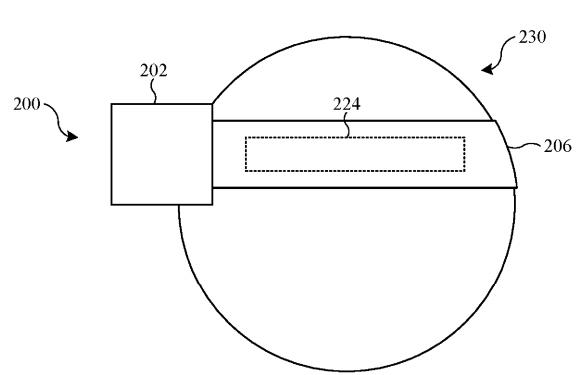Apple patents VR headset that can automatically adjust tension

What you need to know
- A new Apple patent has revealed how its AR/VR headset could adjust automatically.
- The tension adjustment system would react to sensors, keeping the right amount of tension.
- It would likely mean an Apple VR headset would be more comfortable to wear and interact with the physical realm better.
A new Apple patent has revealed how an Apple VR headset of the future could automatically adjust the tension of the band on your head.
In a move that could see Apple's own headset compete with the best VR headsets currently on offer, the patent is titled 'Head-Mounted Device With Tension Adjustment' and its abstract states:
A head-mounted device includes a device housing, a support structure that is connected to the device housing to support the device housing with respect to a user, a display device that is connected to the device housing to display content, an optical system that is associated with the display device, and sensors that generate sensor output signals. The head-mounted device also includes a tension controller that determines a tensioning command based on the sensor output signals, and a tension adjuster that applies tension to the user according to the tension command in order to restrain motion of the device housing with respect to the user.
The patent, clearly pertaining to a wearable AR or VR headset, details how Apple could use tension adjusters and motorized hinges to keep such a device well-fitted to you as you use it. The patent specifically mentions how this could improve AR applications, where digitally-generated images are overlayed with the real world:
In virtual reality-type devices, relative motion of the optical system relative to the user's head may result in blurring and distortions. In augmented reality-type devices in which content is displayed on a translucent optical element so that the physical environment remains visible, relative motion of the optical system to the user's head may result in misalignment of computer-generated reality content relative to the physical environment as well as blurring and distortions.
When it comes to VR, the above reveals how such a system might help to reduce blurring and distortion for the user.
Apple is rumored to be working on a virtual reality headset with two 8K displays that could cost as much as $3,000, and that may debut as soon as next year. With the patent only granted on March 4 and filed in 2019, it is unclear whether this is a feature that Apple plans to include in the first iteration of its AR/VR offering. As with all patent filings, there's every chance it won't ever see the light of day.
iMore offers spot-on advice and guidance from our team of experts, with decades of Apple device experience to lean on. Learn more with iMore!

Stephen Warwick has written about Apple for five years at iMore and previously elsewhere. He covers all of iMore's latest breaking news regarding all of Apple's products and services, both hardware and software. Stephen has interviewed industry experts in a range of fields including finance, litigation, security, and more. He also specializes in curating and reviewing audio hardware and has experience beyond journalism in sound engineering, production, and design.
Before becoming a writer Stephen studied Ancient History at University and also worked at Apple for more than two years. Stephen is also a host on the iMore show, a weekly podcast recorded live that discusses the latest in breaking Apple news, as well as featuring fun trivia about all things Apple. Follow him on Twitter @stephenwarwick9
